I wanted to share our experience with different plant guards on our Land for Wildlife / VCA property in Carindale over the last twenty years. We started revegetation in 1996.
Our longest serving volunteer John, from Save, Care for and Regenerate Urban Bushland (SCRUB), says, “Whatever we plant is just like ice creams and lollies for the wallabies”. He is not wrong. Whatever is not caged is eaten.
Originally, in the 1960s, my dad planted Hoop Pine seedlings from the DPI directly into surrounding flourishing lantana. It worked. The lantana is now gone and the Hoop Pines are huge and have babies of their own. We don’t encourage lantana for this purpose anymore, so have had to find other means.
No naturally occurring regrowth seedlings are eaten by wallabies, so whatever the recipe is for nursery-grown plants, which come from locally-sourced seed has a particular attraction.
I have seen a wallaby jump on a wire cage till it was flat enough to ravage the plant inside. The post was not substantial enough.
A friend noticed a kookaburra trapped inside a generous wire cage about one metre in diameter. The bird got in but could not fly out. Cages need to be smaller, max. 40-50 cms diameter or much larger.
A cage with the door left open overnight was completely stripped by next morning. Lollies and ice cream! Happy planting.
Plastic Square Mesh
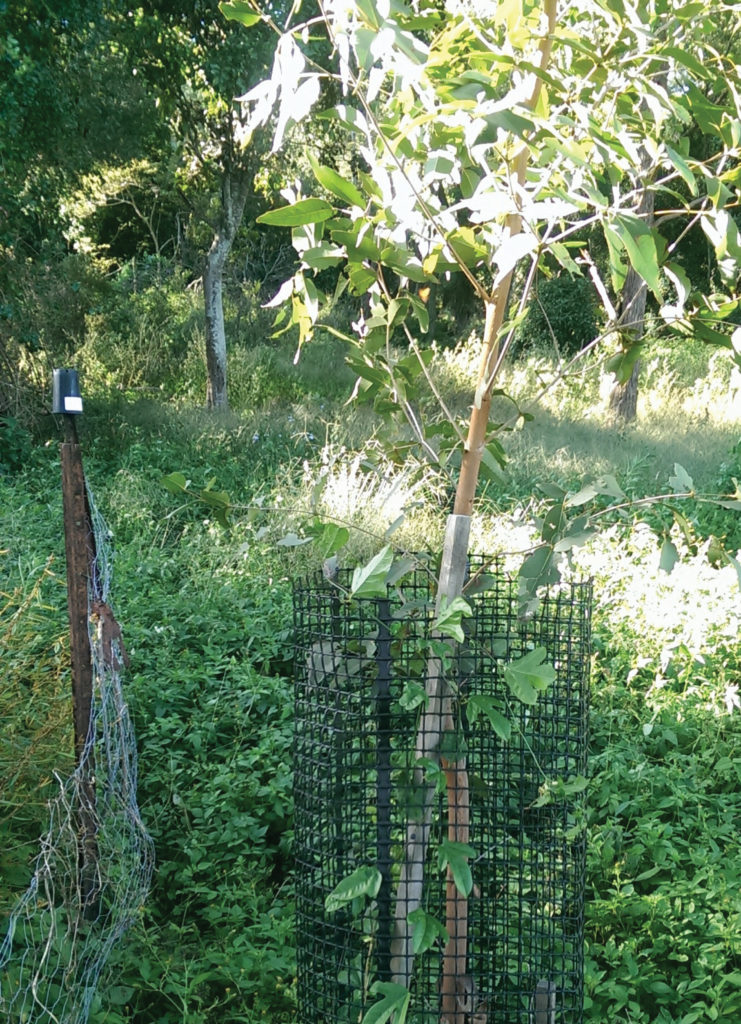
Black plastic square mesh guards, small and large with wood or star pickets. Guards should be about 40-50cm wide and 1-1.2m high when constructed. Used since 2015.
Reason
- Failure of other methods.
- Good air flow for leaves.
- Light and easily constructed.
Outcome – Excellent
- Small guards need to be changed to larger guards as the plant grows to avoid plants being grazed.
- Good for single satellite plants.
- Wood posts prone to white ants.
- Expensive time-wise to be made up but reusable.
Log Mounds/Stick Piles
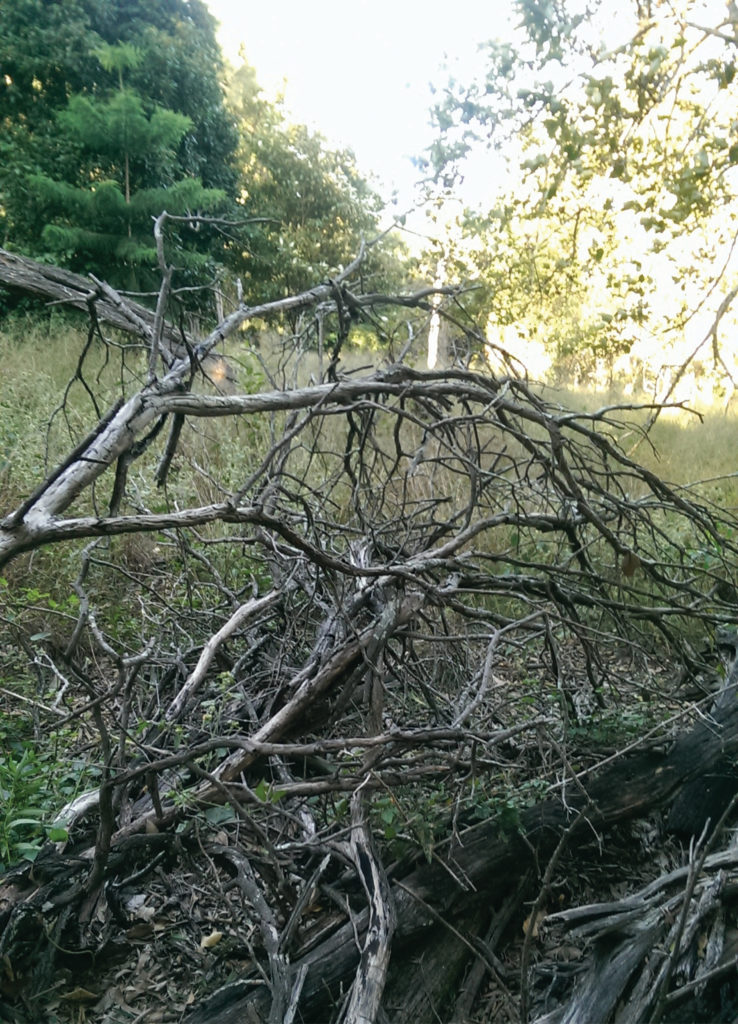
High, wide mounds of logs and sticks surrounding single planted species. Used in the 1990s.
Reason
- Sourced on site.
- Biodegradable forming mulch as well.
- Little gear required.
- Used where access was difficult.
Outcome – Poor
- Too fragile to protect against large browsers.
- Prone to white ant destruction opening the way for turkey and echidna diggings.
- Flatten out prior to plant establishment.
Corflute
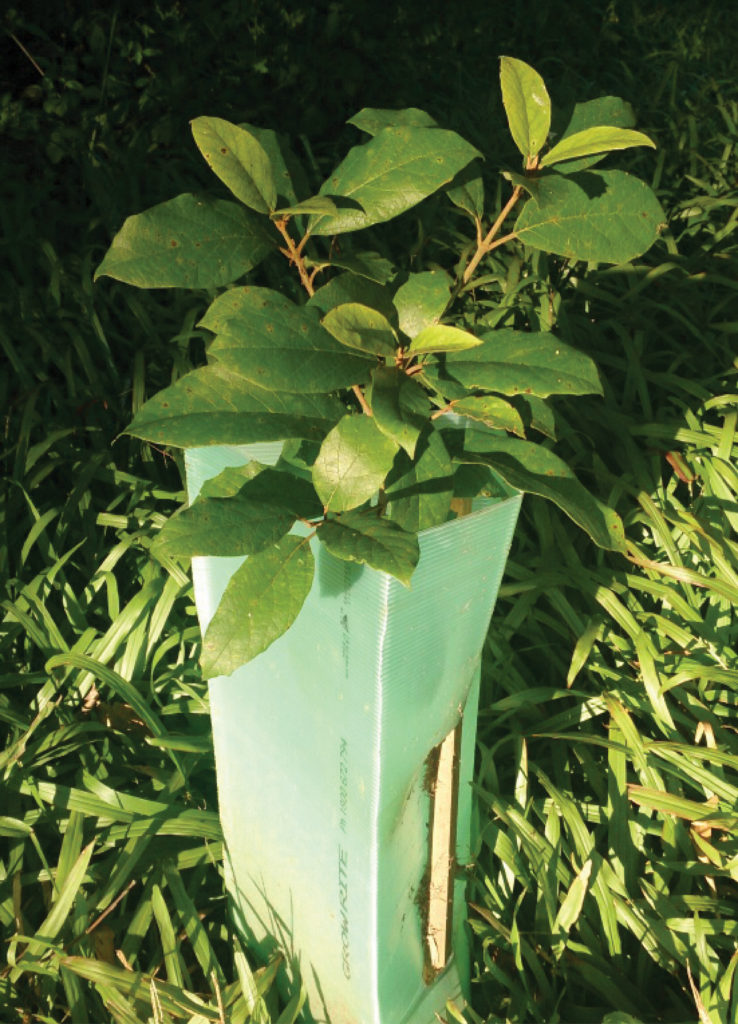
Small and large green corflute triangular flat pack plant guards with wooden stakes. Used from 2000 until 2015.
Reason
- Lightweight, easily handled and assembled.
- Commonly issued and can be sprayed around with herbicide.
Outcome – Poor
- Most plants failed to thrive, died or went mouldy and/or were broiled alive.
- Grown plants were regularly eaten off at the top of the plastic (both sizes).
- Wooden posts were eaten by termites or knocked over by browsers.
Plastic Sheaths/Bags
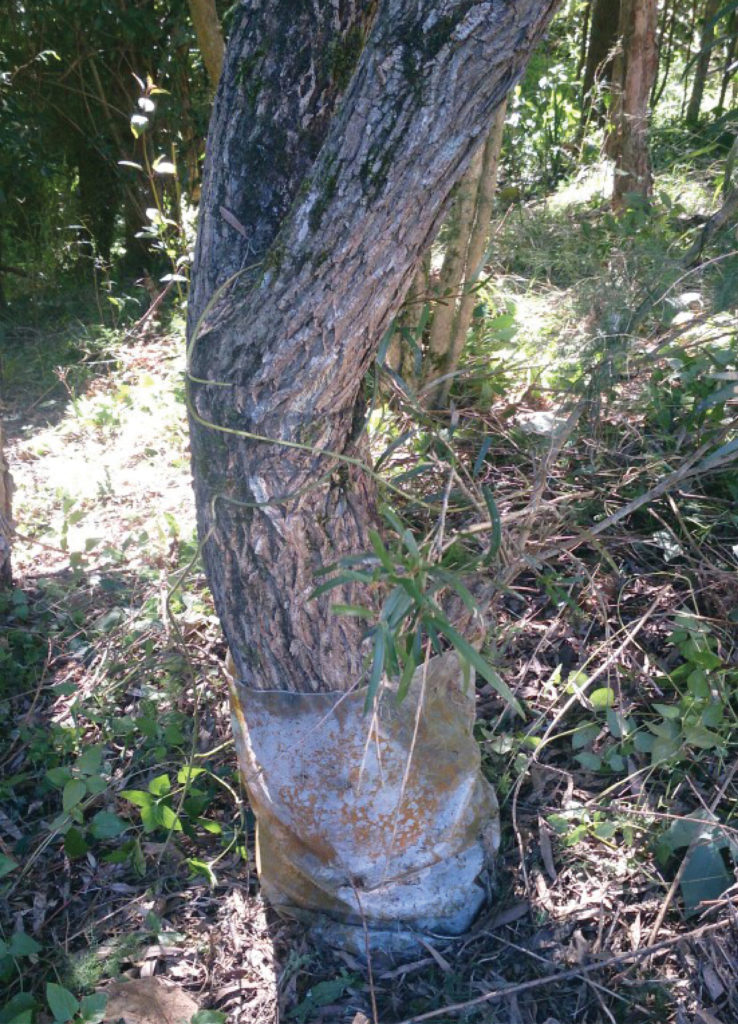
Stiff, translucent plastic sheaths (+/- 50 cm high) with green sticks. Used in the late 1990s.
Reason
- Commonly issued at the time and they looked cheap and mass produced.
Outcome – Poor
- The bags fell down like old socks and required too much follow up.
- Water pooled inside the bags which encouraged mozzies and algae and made the plants mouldy.
- Plants were suffocated by fallen bags or easily knocked over by browsers.
- They were ugly and had to be retrieved.
Mosaic Planting Pods within Wire Cages
Mosaic plantings using star pickets and heavy gauge chook wire to create cages, or ‘pods’, approximately 6-10 x 3 metres in size. 12 to 15 star pickets per pod in an oblong shape. Fencing wire around the top of the fence to stabilise it. Staples into the ground to keep wire down and critters out. Pre-prepare site with weeding and spraying. Used since 2015.
Reason
- Tough, recyclable gear.
- Must be left in place for at least 3 years.
- Multiple cages can be placed apart allowing animal movement between.
- Animals can’t go over or under the wire unless the ‘simple’ gate (as shown left) is left open!
- Birds that fly in can fly out.
- This method allows for a broad mix of plants of all heights.
Outcome – Excellent
- Allows workers to get in to weed and water easily.
- Best used in conjunction with tall black plastic mesh caged satellite trees.
- Initially expensive and requiring hard labour installing but very durable in the long term and recyclable.
- Requires vehicular access for initial construction.


A successful mosaic planting ‘pod’ using wire and star pickets.
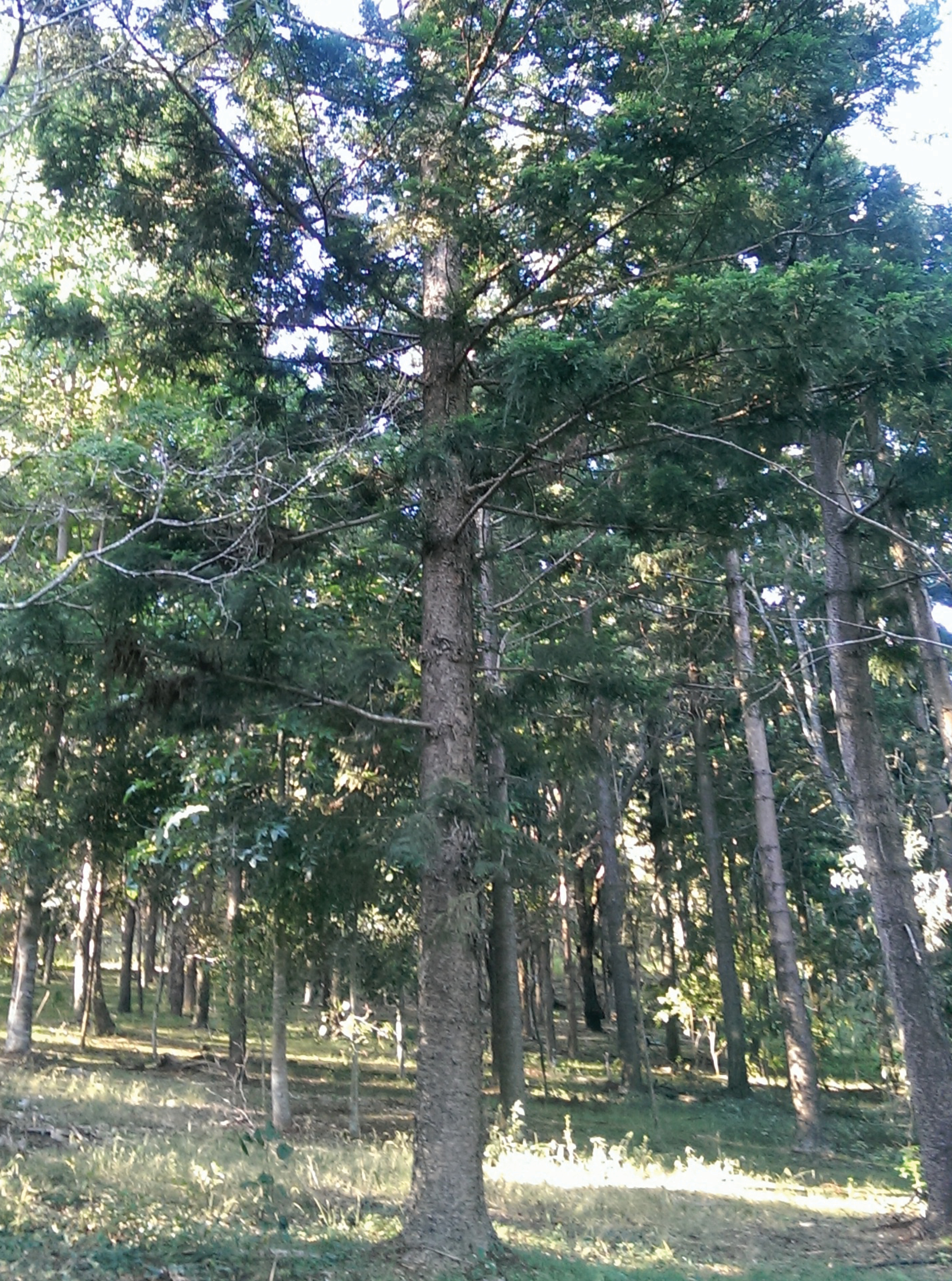
Photos by Susan Nolan and Fflur Collier
Conservation Partnerships Officers
Brisbane City Council
Article by Nancy Crammond
Land for Wildlife member, Carindale, Brisbane



What a great comparison of ways to try to save plants from being ruined. Thank you very much. I had a small orchard of apple trees ringbarked by munching kangaroos, and was looking for a solution that would work. I’ll have to do the plastic or wire mesh by the look of it..